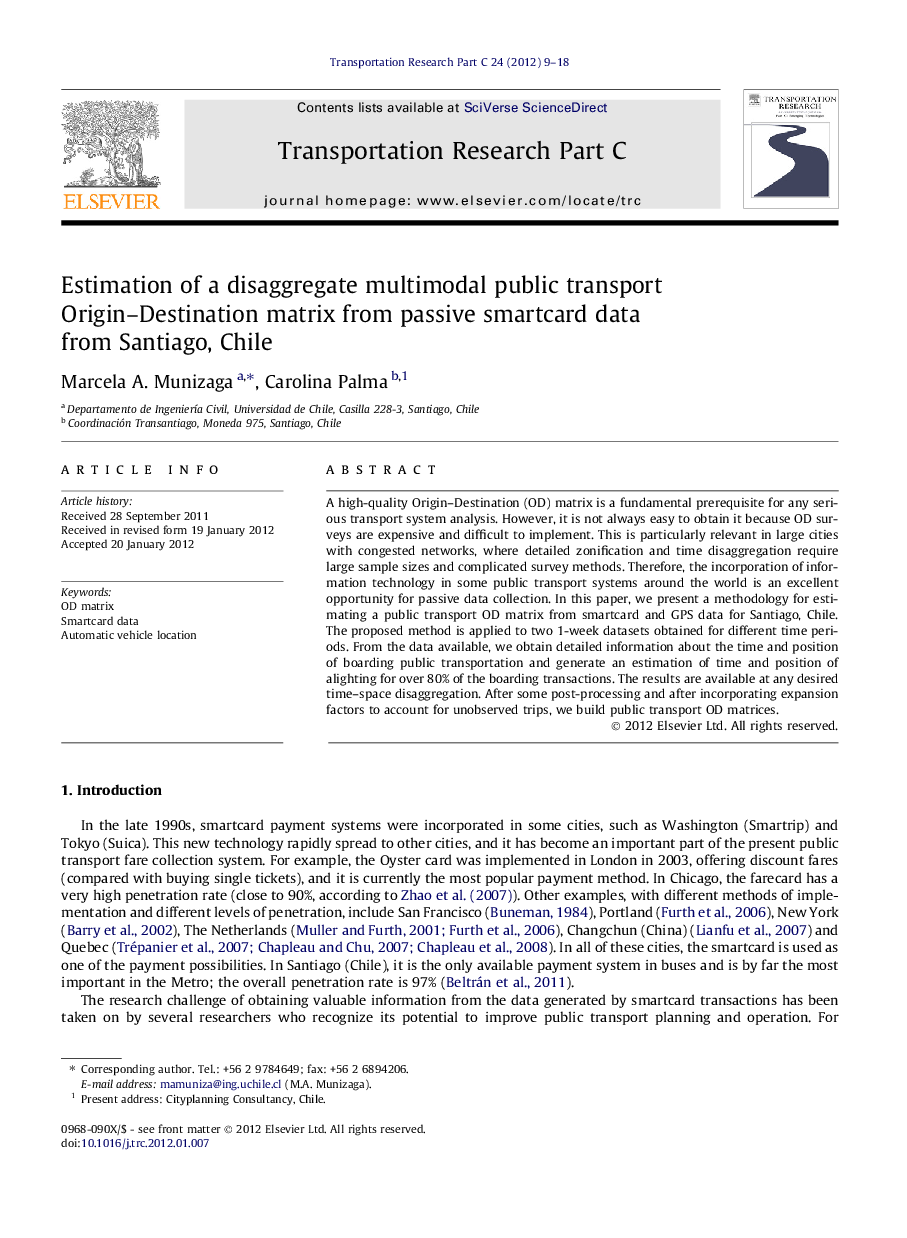| Article ID | Journal | Published Year | Pages | File Type |
|---|---|---|---|---|
| 525286 | Transportation Research Part C: Emerging Technologies | 2012 | 10 Pages |
A high-quality Origin–Destination (OD) matrix is a fundamental prerequisite for any serious transport system analysis. However, it is not always easy to obtain it because OD surveys are expensive and difficult to implement. This is particularly relevant in large cities with congested networks, where detailed zonification and time disaggregation require large sample sizes and complicated survey methods. Therefore, the incorporation of information technology in some public transport systems around the world is an excellent opportunity for passive data collection. In this paper, we present a methodology for estimating a public transport OD matrix from smartcard and GPS data for Santiago, Chile. The proposed method is applied to two 1-week datasets obtained for different time periods. From the data available, we obtain detailed information about the time and position of boarding public transportation and generate an estimation of time and position of alighting for over 80% of the boarding transactions. The results are available at any desired time–space disaggregation. After some post-processing and after incorporating expansion factors to account for unobserved trips, we build public transport OD matrices.
► We present a methodology for estimating an OD matrix from smartcard and GPS data. ► The method is applied to one week of data with 80% success in alighting estimation. ► OD matrices disaggregated at bus stop level are built from the data.
